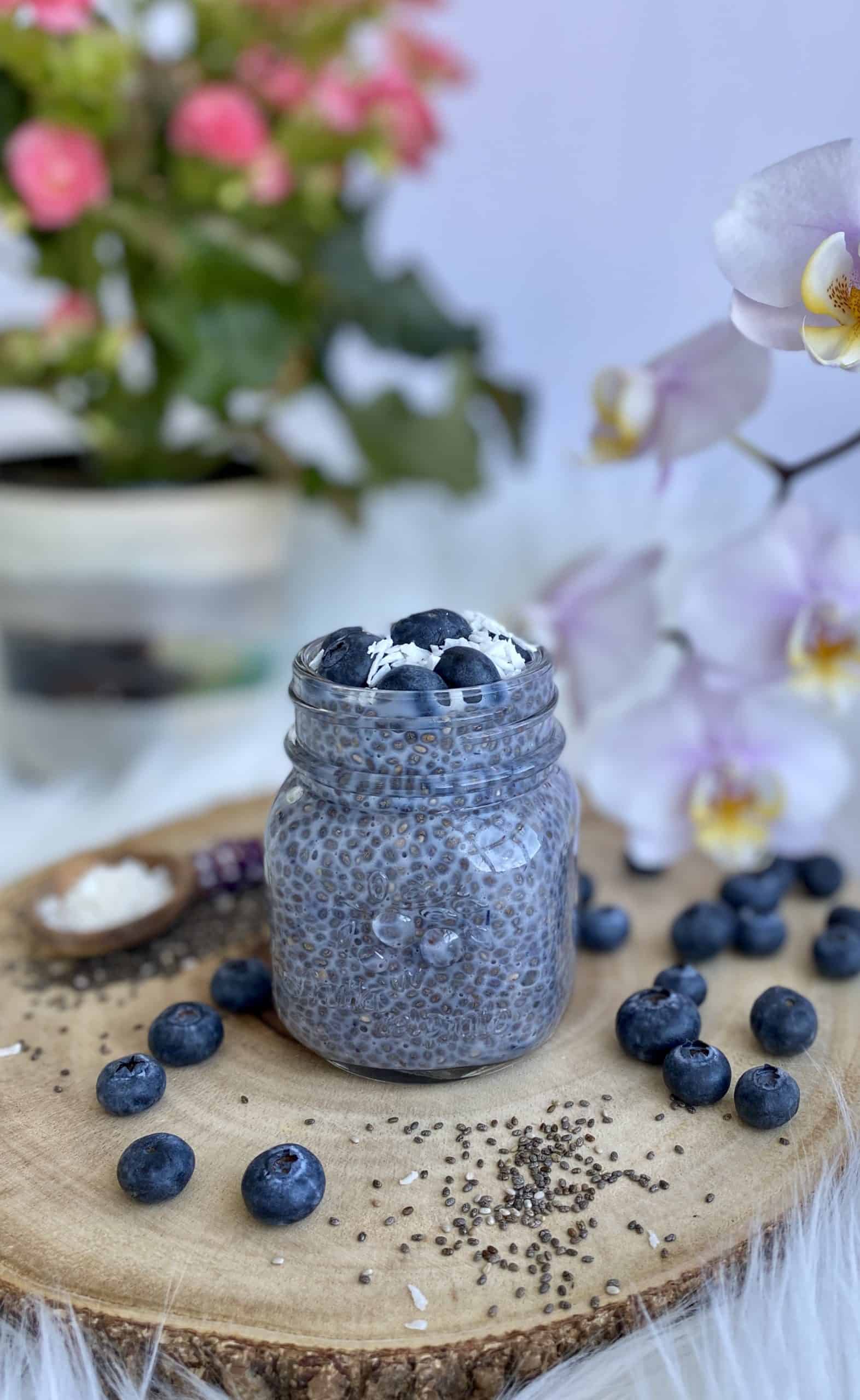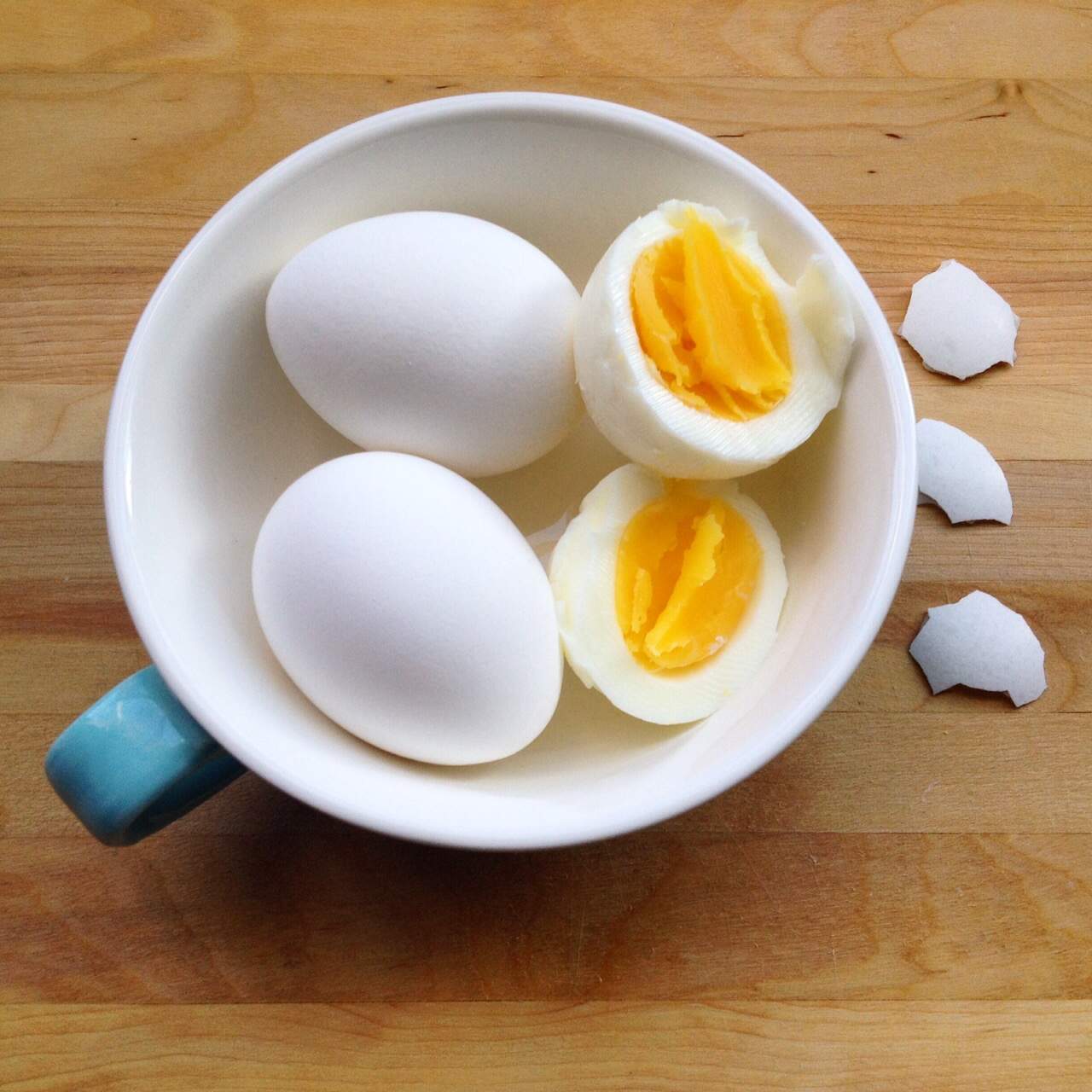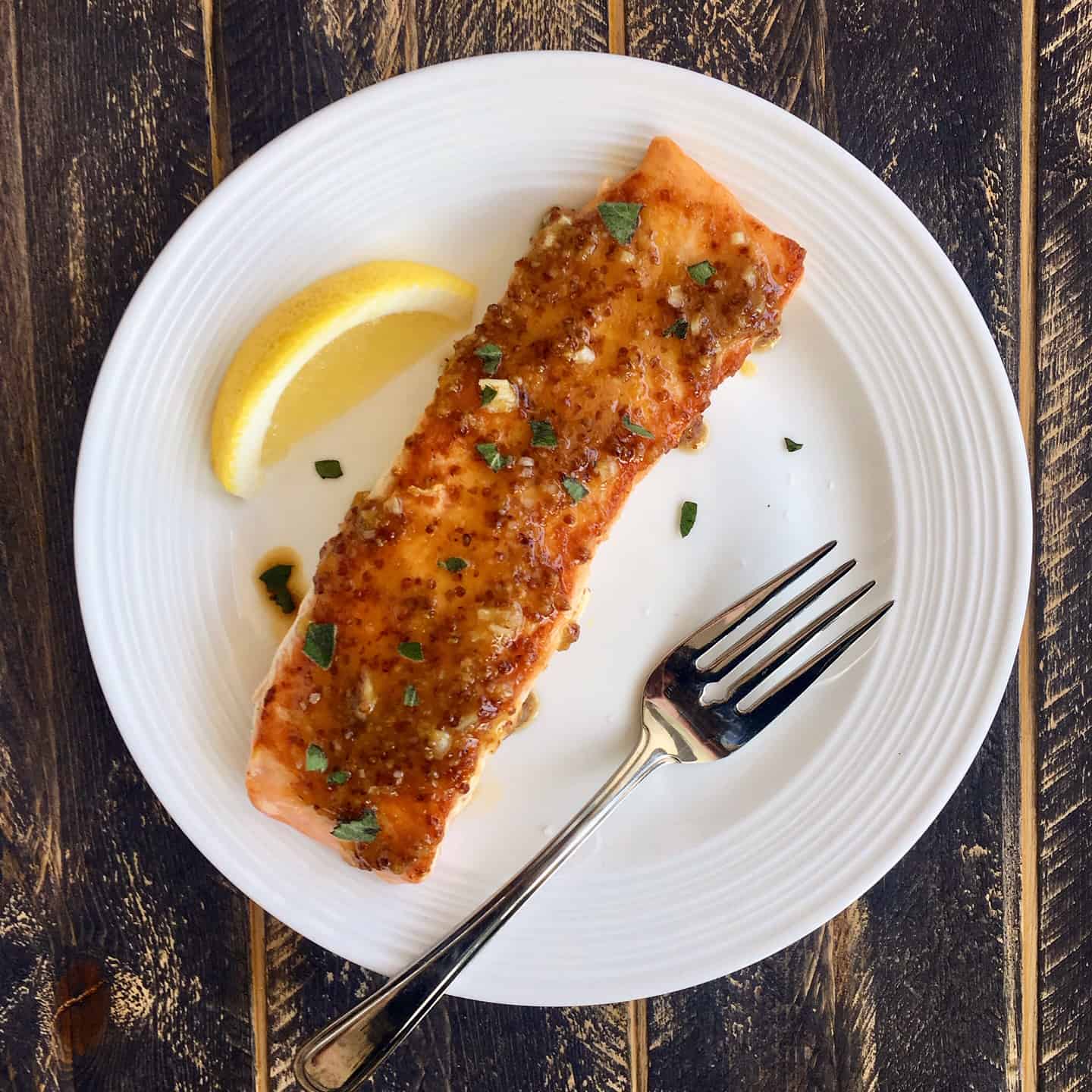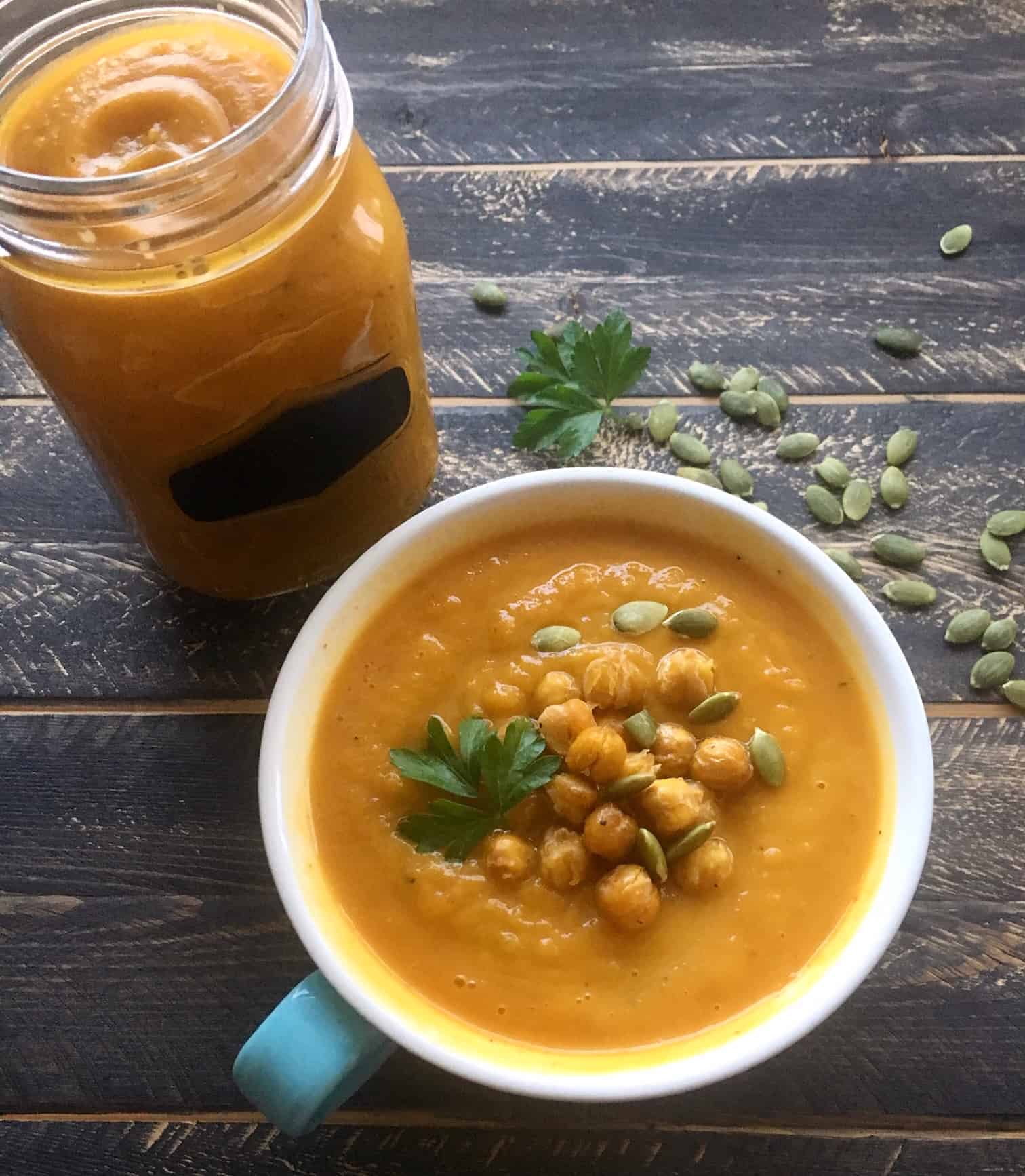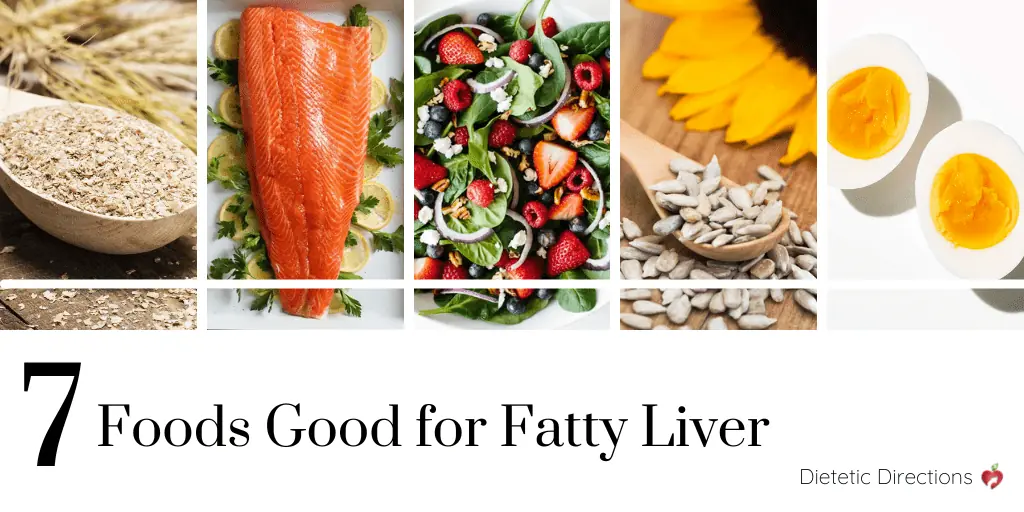
7 Foods Good for Fatty Liver
March is Liver Health Month as well as Nutrition Month! Therefore, let’s explore 7 foods that are good for fatty liver. After all, there’s power in nutrition and the foods we eat to help us manage (or prevent) certain health conditions. Today, I’ll highlight 7 foods good for managing non-alcoholic fatty liver disease (NAFLD), which is the most common type of liver disease affecting about 20% of Canadians and 25% of Americans.

Let’s learn how nutrition and foods can help manage fatty liver. Read on!
This post was sponsored by the Egg Farmers of Ontario; as always, all opinions are genuine.
Learning how to optimize your nutrition for liver health is essential since the liver helps rid the body of toxins. Therefore, by including foods good for fatty liver, we can improve liver inflammation or scarring that may result from excess fat buildup. However, be sure to consult with a registered dietitian for personalized nutrition goals and vitamin supplement recommendations.

Non-alcoholic fatty liver disease affects 1 in 5 Canadians (20% of the population)
What is Non-Alcoholic Fatty Liver Disease (NAFLD)?
Non-alcoholic fatty liver disease (NAFLD) typically develops when a person consumes more fat and sugar than his/her body can handle. There’s a spectrum of severity from mild fat accumulation (fat builds to 5% of liver’s weight), to greater fat accumulation with inflammation and liver damage, which is known as nonalcoholic steatohepatitis (NASH). Progression of liver disease can cause liver hardening (fibrosis) and scarring (cirrhosis).
What foods are good for fatty liver? Find out in this #dietitian blog post! Share on X
What are Symptoms of Fatty Liver?
Fatty liver is known as a “silent disease” since many are unaware they have it; however, some might report:
- Abdominal discomfort
- Fatigue
- Vague discomfort
- Feeling of being unwell
How to Diagnose NAFLD?
To diagnose NAFLD, your medical doctor can order a blood test to assess liver enzymes to determine if the liver has been damaged. Then, if NAFLD is suspected, a diagnosis can be made with a CT scan, MRI or Fibroscan to examine presence of fat in the liver.

Worried you have NAFLD? Your medical doctor can diagnose fatty liver with a blood test and a scan.
7 Foods Good for Fatty Liver:
1. High-Fibre Foods (Bran, Whole Grains & Legumes)
Firstly, I’m highlighting high-fibre foods, (such as bran, whole grains and legumes) which benefit fatty liver since they help lower liver enzymes. They also improve cholesterol, blood sugars, triglycerides and improve blood pressure. Likewise, fibre is the indigestible component of foods, so it slows digestion, which can help us feel full longer. This “fibre-filling effect” acts as ‘roughage’ and supports bowel regularity and weight management, which can be helpful for managing fatty liver.
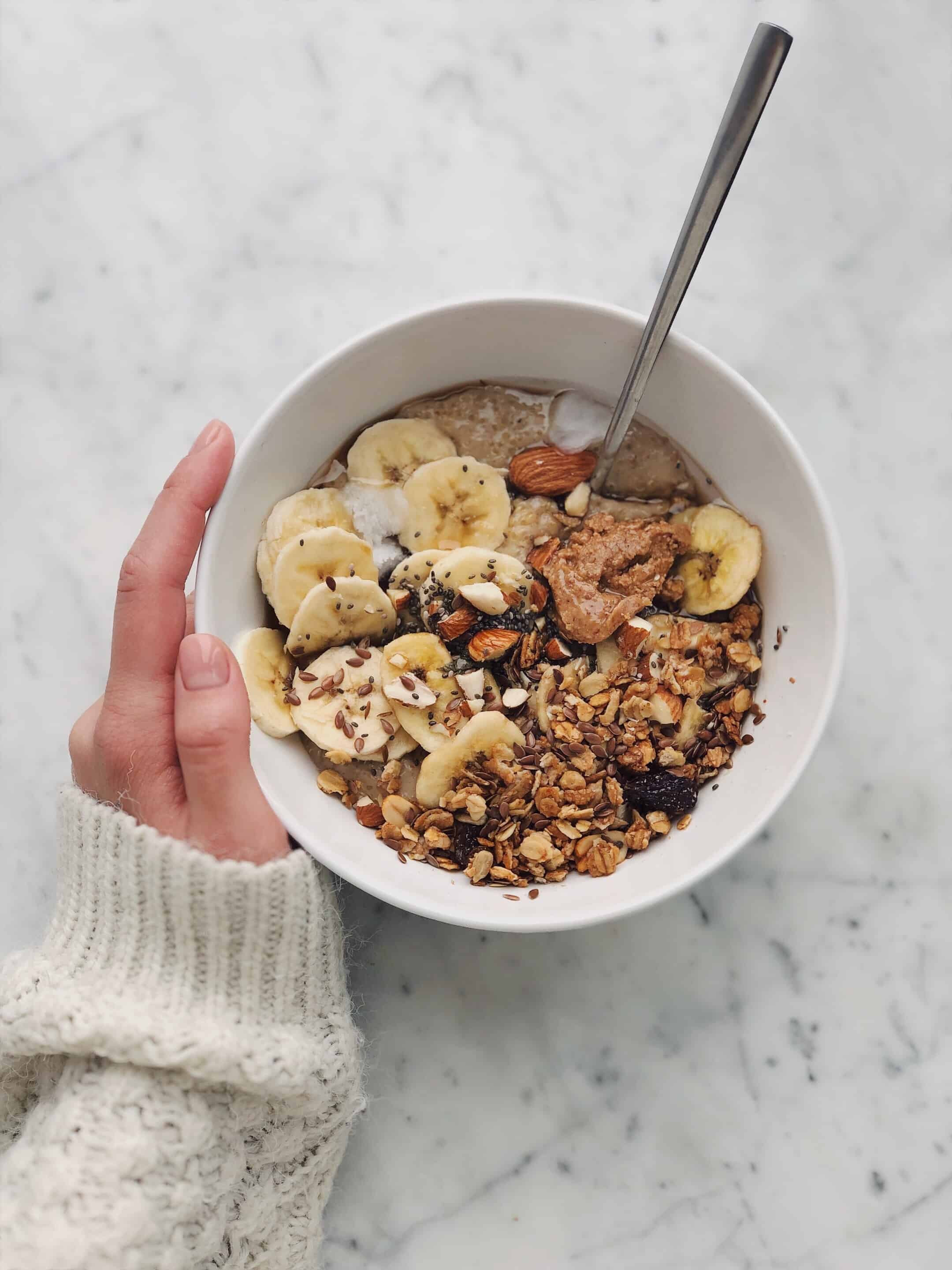
High Fibre foods help improve fatty liver, blood pressure and cholesterol.
Choose high-fibre (or unrefined) carbohydrates as fuel. Compare nutrition labels and look for foods with 5 grams or more of fibre per serving.
Food Sources of Fibre:
- Bran cereal
- Whole grain bread, sprouted grain bread, high-fibre pasta
- Beans, peas & lentils (dried or canned split peas, chickpeas, soybeans, etc.)
- Avocado
- Oatmeal
- Chia seeds and flax seeds
Chia Seed Pudding is a fibre-boosting meal or snack that’s helpful for liver enzymes.
2. Eggs
Many don’t know that eggs are a food that’s good for fatty liver. This is because eggs are rich in choline, which plays a role in transporting and lowering LDL or “bad” cholesterol. Therefore, choline deficiency can manifest as non-alcoholic fatty liver disease because choline is required to synthesize very low-density lipoprotein (VLDL) particles, which transport fat from the liver. Similarly, studies have shown that insufficient choline intake worsens liver disease (increases liver enzymes and liver fat). A serving of two eggs contain 300 mg of choline, which equates to 70% of daily choline requirement for women and 55% of daily requirement for men. Keep in mind that population groups like pregnant and breastfeeding women require higher intakes of choline.
Interested in a new way to enjoy eggs? Try our Mediterranean Flatbread with Poached Egg!
DYK: Choline is an essential nutrient that is often under-consumed. It’s also important for transporting cholesterol away from the liver, which helps improve fatty liver.
Food Sources of Choline:
- Eggs
- Liver
- Meat & Seafood
- Dairy Products
- Soybeans, soy milk and tofu
- Beans
- Quinoa
- Brussels sprouts
- Cruciferous vegetables
- Green peas
- Shitake mushrooms
Batch-prepping hard cooked eggs means you have a convenient & nutritious protein that’s also good for fatty liver.
3. Salmon
Next, I am highlighting salmon as a food that’s good for fatty liver. This is because it’s rich in omega 3 fatty acids, which are a type of “polyunsaturated fat or PUFA” with positive effects on fatty liver, as well as cholesterol and insulin sensitivity. Polyunsaturated fats in foods like salmon help reduce oxidative stress and inflammation which are both present in fatty liver. In addition, research shows that saturated fats increase liver fat compared to PUFAs such as omega 3’s.
Incorporate omega-3 fatty acids into your diet with this Maple Dijon & Garlic Salmon recipe!
Food Sources of Omega-3’s:
4. Coffee
This one might have you rejoicing if you love your morning brew as much as I do. Recent research shows that regular coffee consumption is significantly associated with reduced risk of fatty liver and decreased risk of advancement to liver fibrosis. Caffeine appears to lower the number of abnormal liver enzymes in those at risk for liver disease. However, it’s still recommend to enjoying moderation in your coffee consumption is still recommended; find out more.

Are you drinking coffee in moderation? Find out in our blog, How Much Coffee is too Much?
Coffee has anti-inflammatory properties and is rich in antioxidants which fight against oxidative stress in the liver. Also, coffee contains non-caffeine antioxidants such as cafestol, kahweol, and chlorogenic acid, which can help reduce fat and cholesterol levels in liver cells. Further research is still needed to determine quantity and form of coffee for desired effects; however, there are enough good reasons to continue enjoying your coffee in moderation.
5. Colourful Berries & Veggies
Eating the figurative rainbow of fruits and vegetables is a good idea for liver health. This is due to the fact that berries and veggies contain plant-based antioxidants (known as polyphenols), which have health-protective effects. Research shows that higher phenolic acid intake relates to lower incidence and better management of liver health. Research also demonstrates that including plant-based antioxidants in the diet can improve insulin resistance and help with liver scarring or fibrosis.
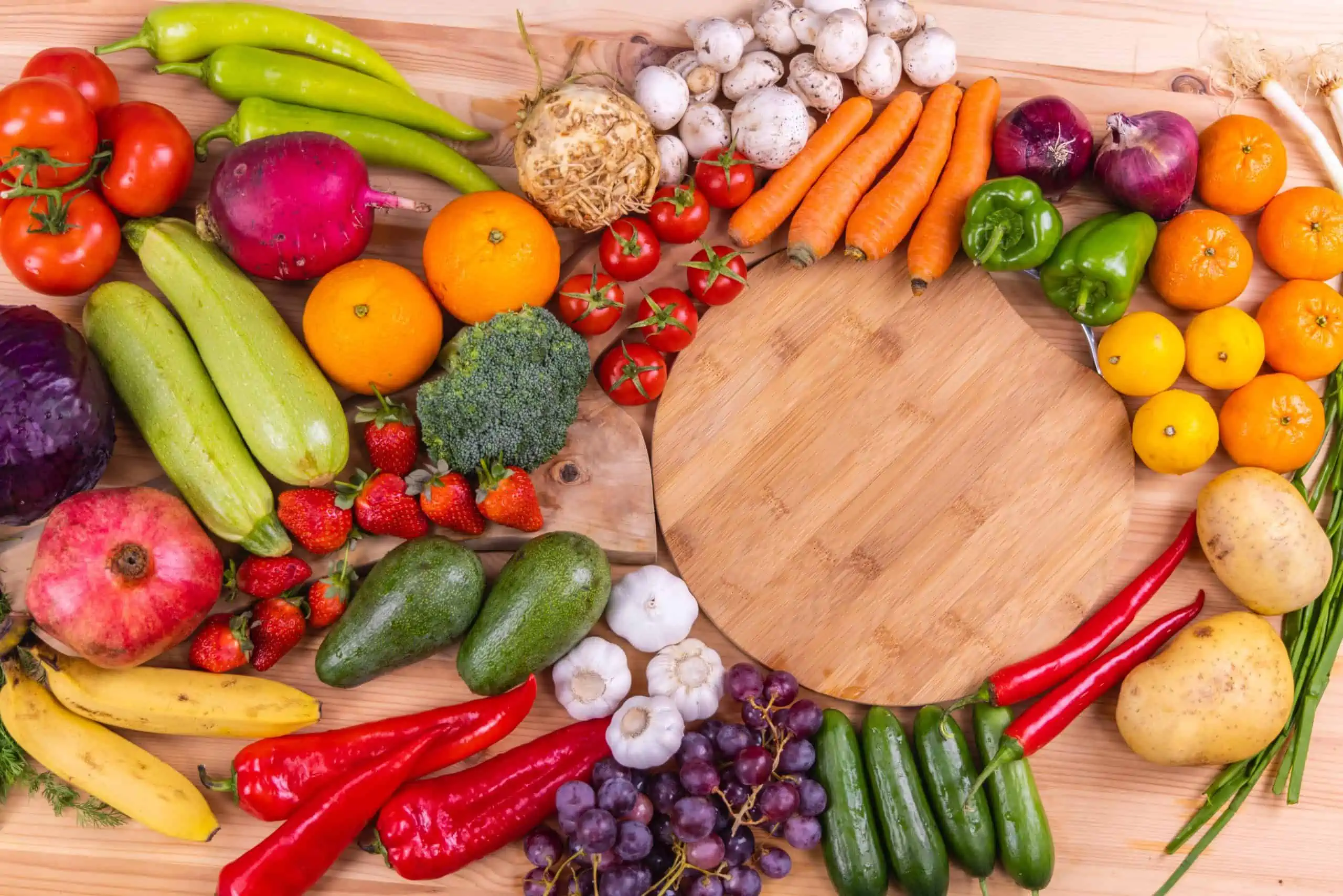
Colourful fruits and veggies boost antioxidants or polyphenol intake, which is good for liver health.
Specifically, emphasizing orange-coloured foods boosts our vitamin A (carotenoids), which are good for managing fatty liver. Carotenoids are a potent antioxidant, which helps in prevention and/or treatment of NAFLD. Therefore, including or substituting sweet potatoes, butternut squash, pumpkin and/or carrots can boost this antioxidant known as beta-carotene. Interestingly, those with fatty liver tend to have lower levels of vitamin A, which can lead to advancing fatty liver. However, sufficient levels of vitamin A can improve fat and liver enzymes.
What’s better than a bowl of hot soup on a cold day? Cozy up with a bowl of Butternut Squash & Pumpkin Soup.
6. Sunflower Seeds
Next, I am highlighting sunflower seeds as a food that’s good for fatty liver because they’re super-high in vitamin E. Since vitamin E is an antioxidant, it has anti-inflammatory properties that counter oxidative stress and can improve liver functioning or slow the progression of NAFLD. Interestingly, one quarter cup of sunflower seeds has over 70% of your daily vitamin E. Additionally, research shows that those with fatty liver tend to have decreased levels of vitamin E.
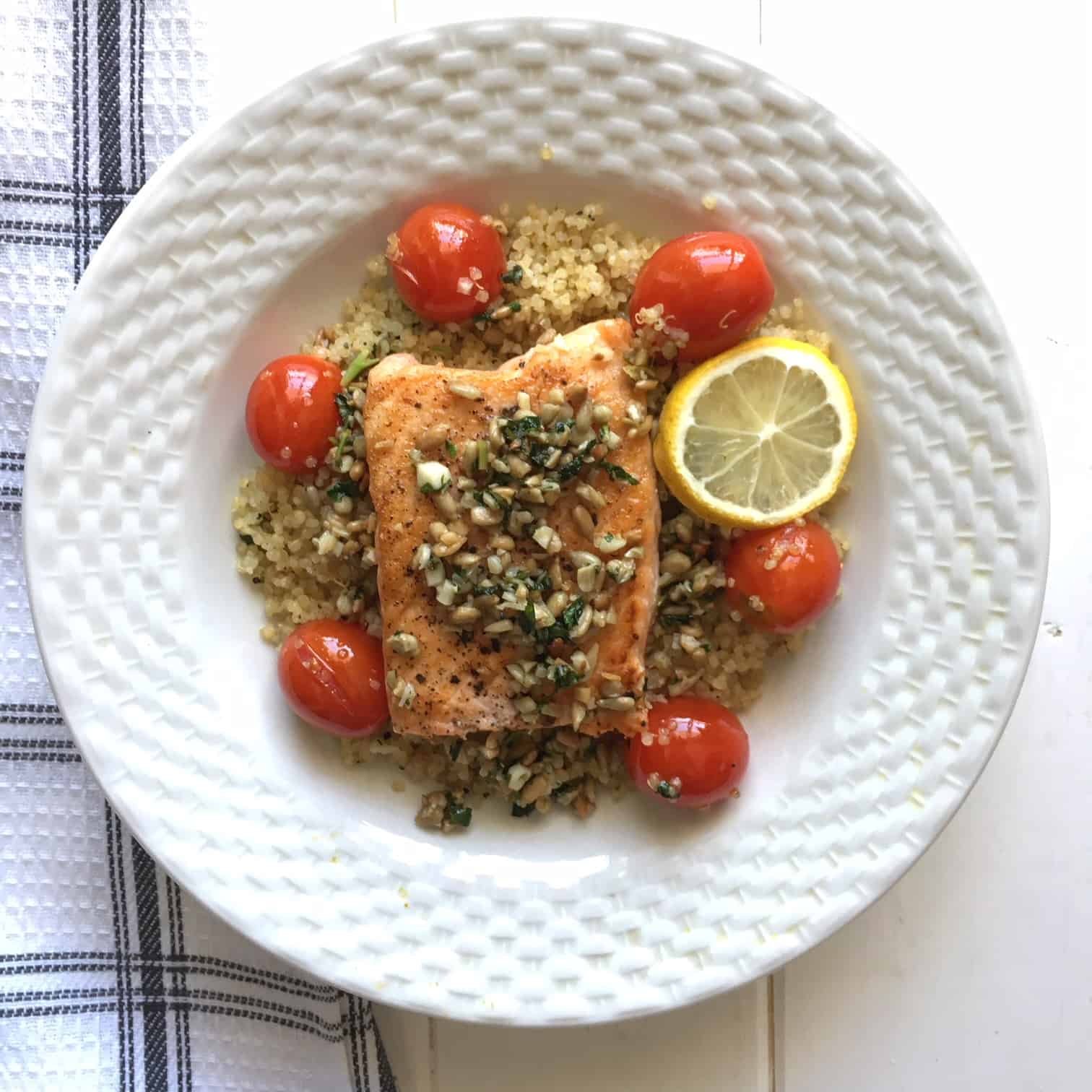
Sunflower seeds are an excellent source of vitamin E, which are used as a topping for this Garlic Herb Salmon recipe.
Food Sources of Vitamin E:
- Sunflower seeds
- Wheat germ & wheat germ oil
- Almonds & almond butter
- Sunflower/safflower oil
- Hazelnuts
- Peanuts & peanut butter
- Avocado
Supplementation of vitamin E may be helpful if you’re not meeting recommendations, but always speak to a dietitian first!
7. Garlic
Interestingly, it appears that garlic and its bioactive components have a positive effect on liver enzymes and liver fat for those with NAFLD. A recent, double-blind, randomized controlled trial found that garlic powder improved liver enzymes, cholesterol, triglycerides and fasting blood sugar. But another research study found that frequent consumption of raw garlic is inversely associated with NAFLD in Chinese men. Nevertheless, further research is needed to determine the amount of garlic, the form and recommendations for possible liver health benefits. For now, don’t mind the garlic breath!
Wanting to boost your garlic intake? Try our Garlic Tomato Calamari Sauce.
What Lifestyle Factors Support Fatty Liver?
Finally, when modifying dietary habits for fatty liver, it’s also crucial to consider your overall lifestyle. Undoubtedly, your daily habits and dietary intake are crucial for improving liver functioning. Specifically, increasing physical activity helps liver enzymes. Check out 11 benefits of walking for ways to get started and keep this habit going. Weight management may be impactful for liver enzyme reduction combined with calorie reductions. Working with a dietitian can help ensure balanced nutrition and prevent energy crashes and cravings. Finally, be sure to watch habits like ordering take-out, having a high-stress lifestyle or regular consumption of processed or sugary foods and alcohol.

Work with one of our Registered Dietitians for support in managing fatty liver. Book today!
Bottom Line on Foods Good for Fatty Liver:
Nutrition plays a major role in improving fatty liver disease. Additionally, many foods are good for fatty liver, such as bran, salmon, coffee, berries, sunflower seeds, eggs and garlic. Be sure to include these nutrient-dense options regularly and always consider your overall diet and lifestyle habits. This includes limiting processed, high-fat, high-sugar and salty foods. Importantly, working with a registered dietitian and your medical doctor can help to monitor your liver enzymes for improvement.
Optimizing your diet can help with managing fatty liver!
Now it’s your turn. What are some of your favourite meal ideas and recipes for fatty liver management or prevention?


